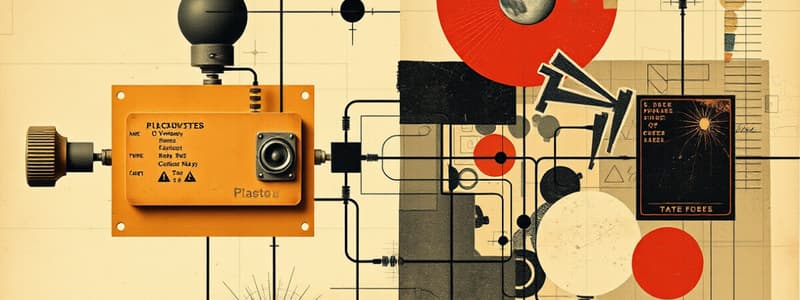Podcast
Questions and Answers
What is an example of an input in the interaction between a scuba diver and her gear?
What is an example of an input in the interaction between a scuba diver and her gear?
- The water temperature at the diving site
- The scuba gear itself
- The air exchanged in the underwater breathing apparatus (correct)
- The diver's physical state
A closed system does not interact with its environment.
A closed system does not interact with its environment.
True (A)
What role do receptors in the skin play in responding to environmental changes?
What role do receptors in the skin play in responding to environmental changes?
Receptors in the skin detect changes in air temperature.
In an interaction between two systems, the output of one system can act as an input to the __________ system.
In an interaction between two systems, the output of one system can act as an input to the __________ system.
Match the components of a system to their descriptions:
Match the components of a system to their descriptions:
What type of control can systems have?
What type of control can systems have?
Feedback is information from later steps of a cycle that acts to change the behavior of earlier steps.
Feedback is information from later steps of a cycle that acts to change the behavior of earlier steps.
What is the primary function of a thermostat in a heating or cooling system?
What is the primary function of a thermostat in a heating or cooling system?
A feedback loop is formed when an output returns to become an input in the same _____ that generated the output.
A feedback loop is formed when an output returns to become an input in the same _____ that generated the output.
In what type of system does a thermostat operate?
In what type of system does a thermostat operate?
Match the following components to their functions in a system:
Match the following components to their functions in a system:
Complex systems are always larger than simple systems.
Complex systems are always larger than simple systems.
What happens when the temperature in a room rises above the set point of a thermostat?
What happens when the temperature in a room rises above the set point of a thermostat?
What is an example of an output generated from an input in a cellular phone?
What is an example of an output generated from an input in a cellular phone?
In an isolated system, all inputs and outputs are allowed to flow freely in and out.
In an isolated system, all inputs and outputs are allowed to flow freely in and out.
Name one component of a cellular phone.
Name one component of a cellular phone.
A system that allows the flow of inputs and outputs both in and out is called an __________ system.
A system that allows the flow of inputs and outputs both in and out is called an __________ system.
Which of the following best describes the boundary of a system?
Which of the following best describes the boundary of a system?
Match the following types of systems with their descriptions:
Match the following types of systems with their descriptions:
The controls in a system help to monitor and manage the inputs and outputs.
The controls in a system help to monitor and manage the inputs and outputs.
What is one input needed for a cellular phone to work?
What is one input needed for a cellular phone to work?
Flashcards are hidden until you start studying
Study Notes
Boundaries and Components
- Boundaries define the system's space, separating it from the external universe, like a protective covering for a cellular phone.
- Components are the parts that interact to fulfill specific functions; for example, a cellular phone comprises a circuit board, battery, connector, and antenna.
- Inputs for systems include energy, matter, and information, while outputs result from processing those inputs, like radio signals converting into sound vibrations.
Inputs and Outputs
- The process of converting inputs to outputs is essential; a radio signal (input) turns into sound (output).
- Comparing systems, inputs and outputs of humans and robots can differ significantly in terms of matter and energy.
Open and Closed Systems
- Open systems allow unrestricted flow of inputs and outputs, while closed systems have some limitations on their flow.
- Isolated systems contain all inputs and outputs within themselves, minimizing external interactions.
- Analyzing whether the human body or robots represent open, closed, or isolated systems brings insight into their interaction with the environment.
Controls
- Controls within a system manage and monitor inputs and outputs, ensuring proper functionality.
- Interactions with nonliving systems can affect the living systems; for example, cool air entering a warm space impacts human body temperature responses.
- Feedback loops are crucial for systems; output from one step of a cycle influences a previous step, creating self-regulation.
System Models
- Thermostats exemplify systems that manage temperature by responding to inputs (room temperature) and adjusting outputs (heating or cooling).
- The complexity of a system can vary widely; for instance, a thermostat is relatively simple compared to a sophisticated chess-playing robot.
System Organization
- Systems exist on a spectrum from small and simple to large and complex, showcasing diverse organizational structures in technology and biology.
Studying That Suits You
Use AI to generate personalized quizzes and flashcards to suit your learning preferences.




